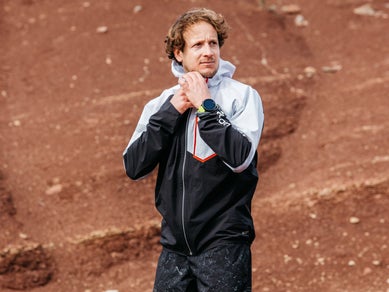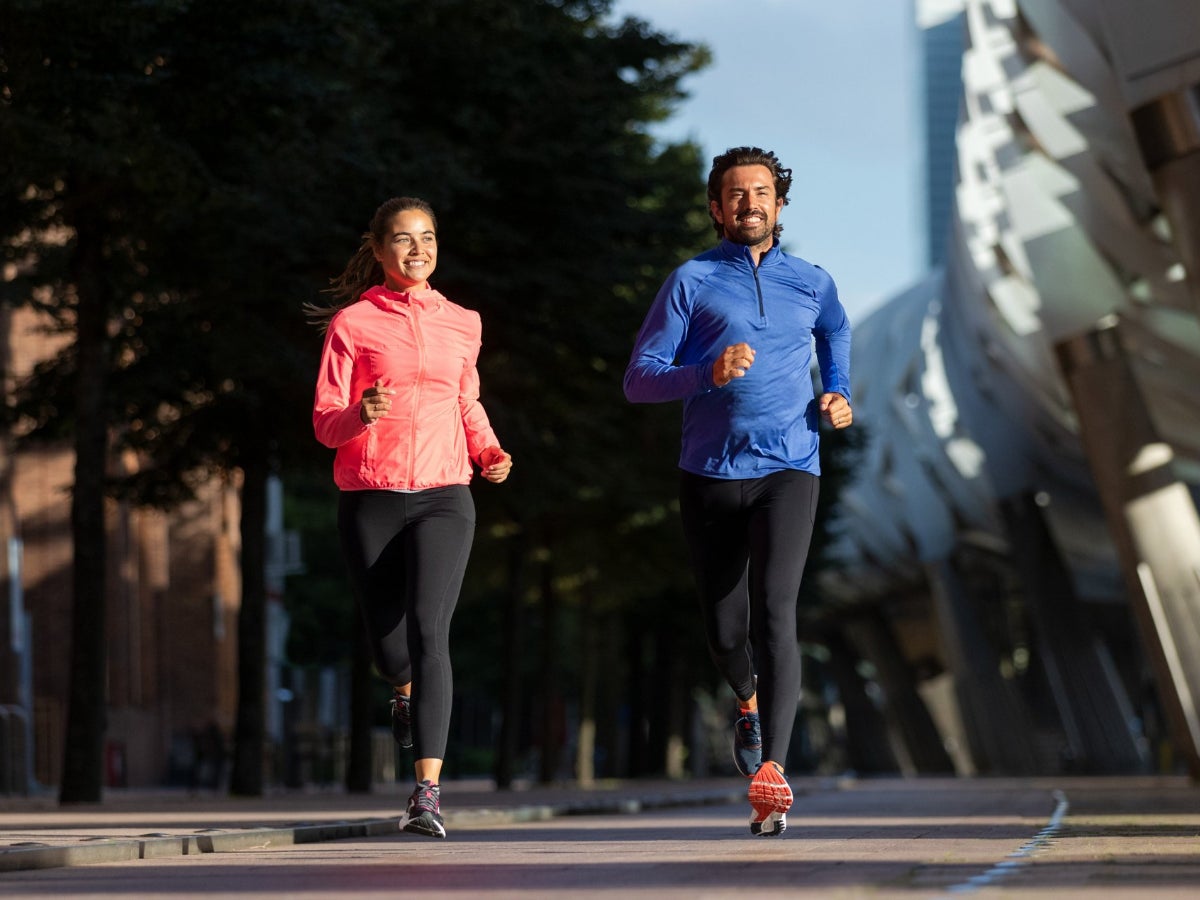The Essential Winter Running Gear Guide
Everything you need to know about getting the best shoes, clothes, and gear for cold-weather running
Published: May 30, 2023

We've reached that time of year again when the temperature dips, and we're forced to swap our short sleeve tees and split shorts for jackets and tights. The warm and summery days are now behind us, but the crisp and cosy runs are about to begin. Rather than letting the winter months get you down or keep you from running, embrace the cold. Let the burn of the frigid air fill your lungs as you push on through the miles ahead. With the proper clothes and gear, you can stay comfortable and continue to train. So whether you are new to cold-weather running or simply want to make sure you are as prepared as possible for the next few months, we've put together a handful of tips along with the best types of running shoes, clothes, and gear you will need for the season.
Best Type of Shoes for Winter Running
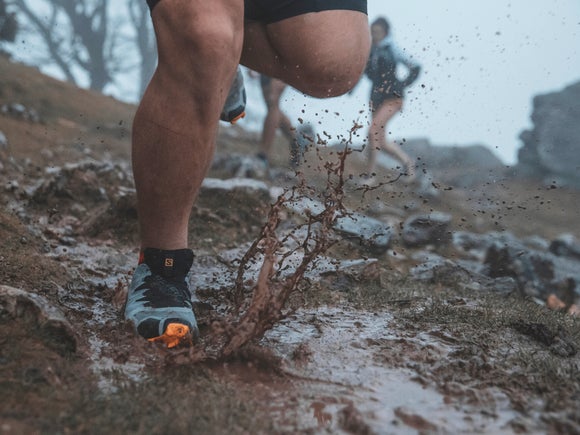
Weather Protection
The first piece of necessary equipment for running through the winter months is a solid pair of shoes that can handle the cold, wind, or rain. Most running shoes feature a breathable mesh upper to prevent your feet from overheating in warmer weather, but in the cold, you will need an extra layer of protection. This is where weatherproof uppers really come in handy. Technology such as GORE-TEX is used in the uppers of many brands to shield against the rain, while other brands offer proprietary water-resistant materials like Saucony's RunShield or Altra's All-Weather. Regardless of your choice, any sort of weather-resistant upper is a huge plus.
Grip
Additionally, you will want to select a winter-weather shoe with plenty of grip, so you're not slipping and sliding around as you take on the miles. While many running shoes offer a rubber outsole for gripping the road, you will want to avoid shoes that opt for foam instead of rubber, especially on icy paths. If you plan to run on trails or snow-packed roads, then a trail shoe with lugs will fit the bill. Otherwise, we recommend looking for a shoe with a Vibram outsole or Vibram Arctic Grip designed specifically for slick and frozen terrain.
Fit
Lastly, another major component to be aware of while selecting winter footwear is how the shoe will fit in the cold. Running shoes with a waterproof GORE-TEX liner tend to fit snugger due to the extra layer of material and lack of elasticity. It's also important to note that you will most likely be wearing thicker socks to protect your feet from the cold, so it can be useful to size up a half size from your normal running shoes to accommodate the extra room.
Best Type of Clothes for Winter Running
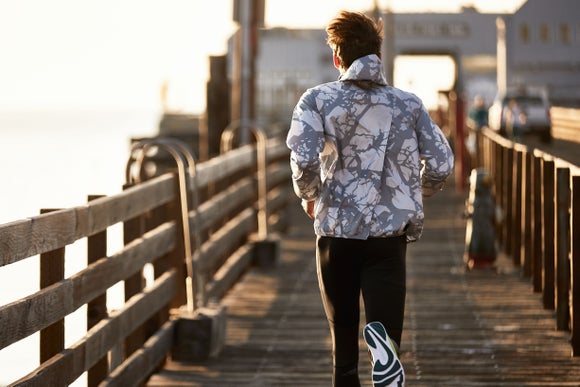
Layering
When dressing for cold-weather running, layering your clothes is the best technique for staying warm and dry. Layering is the process of starting with the clothes closest to your skin, and then adding layers of clothing working your way outwards to an insulated jacket and/or a weather-protective shell, depending on conditions. Be careful not to overdress, as your body will warm up as you run, and excessive sweat in the cold can lead to hypothermia or extreme discomfort. A good rule of thumb is to dress for temperatures that are 10-15 degrees warmer in order to account for your body's natural rise in temperature during activity.
Start the layering with either a base layer or a first layer. These fit close to your skin and are designed to wick away moisture as you sweat, so you can avoid the chills or, even worse, hypothermia. For the next layer, also known as the mid-layer, you will want to add a vest or an insulating long sleeve top. This layer is purely for added warmth in especially chilly temperatures. Lastly, in poor weather or windy conditions, it's important to have a weather-resistant shell. The shell material might be thin, but it provides protection from the rain or wind. These are perfect for changing conditions as well, where you can quickly shed the outer layer if you get too warm or throw it on if the weather turns sour.
Regardless of the layer, you will want to avoid cotton-based clothes at all costs, instead opting for performance wool or synthetic fabrics like polyester that can quickly wick sweat. The main reason to stay away from cotton is that it retains sweat and dries slowly, which can lead to chafing or, in frigid conditions, drastically lowering your body temperature.
Weather Protection
Because the weather itself offers a huge variety of conditions, weather-protective clothes are also spread across a broad spectrum to cover each situation. Weather protection typically comes in two different forms: weather-resistant and weatherproof. Water-resistance signals a more moderate form of wind or water protection and is best equipped to handle a light drizzle or breezy conditions over a shorter period of time. Water-proofing features more substantial details like taped seams and GORE-TEX layers that add further protection over longer stretches of time. So before you head out on your next winter run, make sure you are sporting the right running clothes for the conditions.
Best Type of Gear for Winter Running
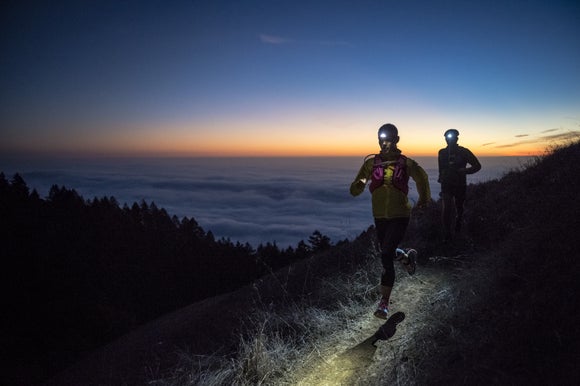
Warmth
While proper shoes and clothes should be your first priority in winter-weather running, it's important to keep your extremities warm as well. In cold weather, your extremities are the first parts of your body to feel chilled. The reason for this is that your body's natural response to the cold is to slow blood flow from your fingers and toes and concentrate it around your vital organs to keep them alive and functioning. Gear such as thick winter socks, insulated gloves, and performance beanies will go a long way toward adding warmth and comfort so you can stay out on your run for longer. And similar to running clothes, a lot of cold-weather running gear offers weather protection against wind or rain for even more coverage.
Visibility
Not only are the winter months the coldest time of the year, but they are also the darkest. As such, it's imperative to ensure you can easily see the path ahead while being seen by passing cars. In order to see the path ahead while running in the dark, headlamps and belt lights are the optimal choice. They allow for hands-free running and help illuminate the road or trail to avoid tripping hazards. While belt lights tend to provide a brighter light overall and a lower angle to the ground for better depth perception, headlamps offer the versatility of being able to turn your head to see what's around you and can fit in a small pocket when not in use. Lastly, in order to be seen while running in darker conditions, we highly recommend wearing a reflective vest. These safety vests fit over your running clothes and allow for 360-degree visibility.
